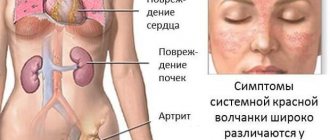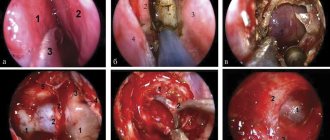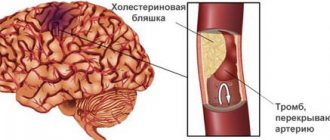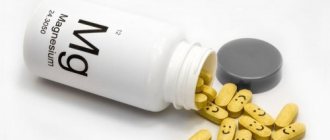What is hematocrit
Our blood is one of many types of tissue in our body. Like any tissue, it consists of cells and intercellular substance. Its main feature is that it is liquid, the cells are not connected to each other and are free floating. Only in this form can blood perform its circulatory function.
Blood cells are red blood cells, leukocytes and platelets, with the main position here being occupied by red blood cells - erythrocytes. There are a thousand times more of them than leukocytes and platelets.
The liquid part of blood is plasma. It consists of 90% water, the rest being proteins and other organic and mineral substances.
The content of the liquid part in the blood is approximately 60%, the content of cells is respectively 40%.
So the percentage or volume content of cell mass in relation to plasma is the hematocrit. The term comes from the Greek roots hemat (blood) and krites (judge). Here we can talk about all blood cells or only red blood cells, which does not significantly change the essence of the concept (leukocytes and platelets occupy no more than 1% of the total cell mass).
It is determined either as a percentage or as a decimal fraction.
Increased Ht in diseases
The causes of pathological growth of Ht are various diseases that can be divided into three categories:
- diseases in which the amount of plasma in the blood decreases;
- kidney diseases, in which the body’s ability to absorb fluid is reduced or there is increased synthesis of a hormone that promotes the production of blood cells;
- malignant diseases associated with pathological changes in red blood cells, as well as their quantity and intensity of formation.
A high hematocrit with intense production of erythropoietin, which enhances the maturation of red cells, is observed in the following cases:
- with ischemic kidney disease, which can be observed with polycystic diseases, tumors, hydronephrosis, traumatic shock;
- when undergoing a course of treatment with glucocorticosteroids;
- in stressful situations;
- for anemia (iron deficiency, B12 deficiency, folate deficiency);
- for erythremia caused by bone marrow pathologies.
To obtain more reliable results, hematocrit calculation is carried out in modern hemoanalyzers
An increased hematocrit may occur when plasma volume decreases, while red cell and hemoglobin levels remain normal. This occurs in the following conditions:
- peritonitis, or inflammation of the peritoneum;
- burns, 10 percent of them are deep and 15% are superficial;
- pulmonary insufficiency associated with COPD (chronic obstructive pulmonary disease);
- chronic cardiac failure, accompanied by edema and accumulation of large amounts of fluid in the abdominal cavity (ascites);
- late toxicosis during pregnancy;
- diabetes.
Hematocrit norms
| The newborn's hematocrit is increased | 50 ÷ 70%(0,5-0,7) |
| Newborn at one week old | 37 ÷ 49%(0,37-0,49) |
| In a baby at three months it decreases | 30 ÷ 36%(0,3-0,36) |
| In a child aged one year | 28÷ 45%(0,28-0,45) |
| In ten years | 36 ÷ 40% (0,36-0,4) |
| In adult women | 36 ÷ 46%(0,36-0,46) |
| In adult men | 38-50%(0,38-0,5) |
How is this indicator determined?
Hematocrit is determined simply: blood is drawn into a special test tube (its inner walls are treated with a substance that prevents clotting). The test tube is placed in a centrifuge, where red blood cells settle under the influence of centrifugal force. The blood is divided into two layers. A simple measurement of the lower column determines the hematocrit value.
The measurement of this indicator is included in the programs of all hematological analyzers produced by various companies. In such an analysis it will be designated NCT or PCV.
Norm
The hematocrit norm differs depending on age and gender. In newborns, the rate is considered high and the norm is 42% - 65%. As one grows older, it decreases; in older people, a minimum level of hematocrit is observed. For adults aged 18-65 years, the norm is:
- For men - 41% - 53%.
- For women - 36% - 46%.
Deviations from the norm can be observed during pregnancy. From about 20 weeks, the indicator decreases due to an increase in the amount of liquid part of the blood for physiological reasons. After childbirth, the hematocrit quickly returns to normal values in the absence of pathologies.
Deviations towards increasing hematocrit are recorded:
- In smokers, due to oxygen starvation of tissues, which leads to an increase in the production of red blood cells.
- When rising to a high altitude, the production of red blood cells increases due to the body's adaptation to the reduced oxygen concentration in the air.
- For stress and traumatic shock, which is characterized by intense pain.
- When taking corticosteroid drugs and diuretics,
Deviations towards a decrease in hematocrit are recorded:
- With prolonged immobility.
- When taking antiplatelet agents and anticoagulants that thin the blood.
- Against the background of high fluid consumption.
- For chronic alcoholism.
Increased hematocrit
The hematocrit in the blood is increased if the ratio between suspended cells and the liquid part changes: there are more cells and less plasma.
An increased hematocrit in the blood can be either absolute (an increase in the number of red blood cells) or relative (the number of cells is not changed, but there is a loss of fluid for some reason).
The main reasons for the increase in this indicator:
- Erythremia (polycythemia, Vaquez disease). This is a tumor disease of the hematopoietic system, characterized by a benign course. At the same time, in the peripheral blood, hematocrit (up to 60-80%), red blood cells (up to 6-12 million in 1 ml), hemoglobin (up to 200 g/l), and platelets are increased.
- Symptomatic erythrocytosis. This is the body’s compensatory response to hypoxia: when oxygen in the body decreases, the number of red blood cells increases. Such conditions can be observed in smokers, those suffering from chronic respiratory diseases, diabetes mellitus, and certain heart defects.
- An increased hematocrit in tests is observed in residents of high mountainous regions, as well as in athletes. This is also a compensatory reaction.
- Kidney tumors. Kidney cells produce erythropoietin, a stimulator of red hematopoiesis. In renal cell cancer, its production is increased, and the number of red blood cells increases accordingly.
- Loss of fluid with vomiting, diarrhea, increased sweating, burns, intestinal obstruction, ascites.
- Overdose of diuretics.
- Long-term use of steroid hormones.
- Fever.
- Insufficient fluid intake.
Indications and preparation for analysis
Indications for hematocrit analysis are symptoms indicating the development of anemia or other diseases of the blood or hematopoietic system. These include:
- Pale or jaundiced skin
- Enlarged spleen, liver
- Changes in the size of lymph nodes
- Digestive disorders
- Skin and hair problems (rashes, ulcers on mucous membranes, hair loss or brittleness)
In addition to identifying anemia, the analysis allows us to identify other diseases, for example, polycythemia (a chronic disease in which the bone marrow produces an excess amount of red blood cells) of various origins. This study is also used when it is necessary to assess the need for blood transfusion and calculate the required volume of transfusion.
No special preparation is required for the hematocrit test. It is necessary to follow the standard rules for conducting a general blood test:
- Blood is drawn early in the morning.
- You should not eat food 6-10 hours before the test.
- Avoid alcohol 2-3 days before the procedure.
Patients who smoke are advised to abstain from smoking for at least 2-3 hours before blood collection. If these recommendations are not followed, the analysis may give unreliable results. This is due to the fact that the composition of the blood is subject to strong fluctuations depending on the action of various environmental factors.
How does increased hematocrit manifest?
An increase in the specific gravity of red blood cells may not manifest itself in any way, or there may be individual, completely nonspecific symptoms:
- headache;
- dizziness;
- feeling of pressure in the head;
- dyspnea;
- fast fatiguability;
- skin itching;
- redness of the skin.
With such symptoms, a person may not see a doctor for a long time, but the problem may grow and lead to serious consequences.
See: Thick blood, Why I'm always cold, Complete blood count.
Blood test for hematocrit
The manipulation is performed in the morning, blood is taken from a vein or from a finger. At the Medart clinic, the most modern equipment is used for analysis, so the sampling is most often done from a vein.
To obtain the material, special vacuum containers (vacutainers) are used. This is a modern syringe replacement that provides a number of benefits for the patient:
- Virtually painless procedure.
- Minimum time to obtain the required amount of blood.
- Accurate calculation of the amount of reagent and blood.
- Minimum time for conducting the study and issuing results to the patient.
Modern technologies allow the procedure to be carried out as quickly as possible, without consequences for health.
Why is it dangerous?
What does it mean if the hematocrit is increased? How dangerous is this?
- The cause of an increased hematocrit may indicate a serious disease (for example, erythremia or kidney cancer).
- Hematocrit is a synonym for blood viscosity. The higher the viscosity, the slower the blood flows through the vessels, the higher the risk of stasis and blood clots. And thrombosis in small and medium-sized vessels means strokes, heart attacks, thrombophlebitis, thromboembolism. These are the most serious complications that most often lead to sudden death.
What does a blood test show?
Some blood test results provide clear information about the risk of occurrence and presence of a particular disease, and also allow you to track the dynamics of the disease, both as it progresses and during the recovery process. Some important blood parameters, such as vitamin D and homocysteine, are unfortunately not included in most panels, despite the fact that they are quite informative.
It is important to remember that most blood biomarkers do not signal any one disease. Most often, a blood test means an increased risk of disease. During the diagnostic process, it is always necessary to take into account changes in several biomarkers (series, panel of analytes) in order to correctly interpret the latter. Testing all biomarkers is quite expensive (about 70,000 rubles on average), however, there are about 40 biomarkers that are the most informative, and the price here is relatively low (about 8,000 rubles).
Another important condition for the correct interpretation of blood biomarkers is the need for repeated studies. The indicators of one analysis are difficult to interpret, because we do not know its basic level, the nature of the influence of various factors, from dietary habits to the effects of drugs. It makes sense to take certain blood tests regularly, some should be done once a year, others - 3-4 times.
Biomarkers of complete blood count
Red blood cell count
Red blood cells are produced in the bone marrow and destroyed in the spleen and liver. The number of red blood cells may be increased due to dehydration and high testosterone levels. May be reduced due to nutritional deficiencies (iron, vitamin B6, vitamin B12, folate), renal dysfunction, chronic inflammation, anemia, blood loss.
Hemoglobin.
Hemoglobin carries oxygen to tissues and can be elevated due to dehydration, elevated testosterone levels, poor oxygen delivery, thiamine deficiency, and insulin resistance. May decrease due to anemia, liver disease, hypothyroidism, exercise, arginine deficiency, protein deficiency, lack of nutrients due to inflammation (vitamin E, magnesium, zinc, copper, selenium, vitamin B6, vitamin A).
Hematocrit
Hematocrit reflects the percentage of blood volume that is made up of red blood cells. May also be elevated due to dehydration, elevated testosterone levels, poor oxygen delivery, thiamine deficiency, insulin resistance. May decrease due to anemia, liver disease, hypothyroidism, exercise, arginine deficiency, protein deficiency, lack of nutrients due to inflammation (vitamin E, magnesium, zinc, copper, selenium, vitamin B6, vitamin A).
Average corpuscular volume
Mean corpuscular volume is an estimate of the average size of red blood cells. May be elevated (“macrocytic”) due to nutrient deficiencies (vitamin B12, folate, vitamin C), alcohol consumption, thiamine deficiency. May be reduced (“microcytic”) due to iron deficiency, lack of nutrients (vitamin B6, copper, zinc, vitamin A, vitamin C).
Average corpuscular hemoglobin
Average corpuscular hemoglobin is a measure of the average weight of hemoglobin per red blood cell. May be elevated (“macrocytic”) due to nutritional deficiencies (vitamin B12, folate, vitamin C), alcohol consumption, thiamine deficiency, and (falsely elevated) due to hyperlipidemia. May be reduced (“microcytic”) due to iron deficiency, lack of nutrients (vitamin B6, copper, zinc, vitamin A, vitamin C).
Average corpuscular hemoglobin concentration
Mean corpuscular hemoglobin concentration measures the average concentration of hemoglobin in red blood cells. May be elevated (“macrocytic”) due to nutritional deficiencies (vitamin B12, folate, vitamin C), alcohol consumption, thiamine deficiency, and (falsely elevated) due to hyperlipidemia. May be reduced (“microcytic”) due to iron deficiency, lack of nutrients (vitamin B6, copper, zinc, vitamin A, vitamin C).
Platelets
Platelets are involved in the clotting process and are important for vascular integrity. May increase due to iron deficiency anemia, collagen diseases, hemolytic anemia, blood loss, stress, infection, inflammation. May decrease due to alcoholism, liver dysfunction, viral/bacterial infections, pernicious anemia, bleeding.
Average platelet volume
Mean platelet volume measures the average size of platelets and reflects their function. May be elevated due to increased platelet production, which is often caused by the loss or destruction of existing platelets. Elevated mean platelet volume levels may be associated with vascular disease, some cancers, type 2 diabetes, and Hashimoto's thyroiditis. The mean platelet volume may be reduced due to conditions associated with insufficient platelet production, such as aplastic anemia or cytotoxic drug therapy.
Red blood cell distribution width
Red blood cell distribution width measures changes in red blood cell size. Usually increases due to anemia associated with nutritional deficiencies (iron, vitamin A, copper, zinc, vitamin B6).
Absolute neutrophils
Neurotrophils are the most common type of leukocytes that neutralize pathogenic microorganisms. May be elevated due to bacterial infection or inflammation. May be decreased due to nutrient deficiencies (copper, B12, folate), increased other white blood cells.
Absolute lymphocytes
Absolute white blood cells are a type of white blood cell including B cells, T cells, and natural killer cells. May be elevated due to viral infections, Crohn's disease and other autoimmune diseases, hypoadrenalism. May be reduced due to zinc deficiency, increase in other white blood cells.
Absolute monocytes
Absolute monocytes are white blood cells that leave the circulation to become macrophages. May be elevated due to inflammation, collagen diseases (i.e. rheumatoid arthritis), ulcerative colitis, recovery from infection or injury.
Absolute eosinophils
Absolute eosinophils are immune cells that become active in the late stages of inflammation. May be elevated due to allergies, asthma, parasitic infections, hypoadrenalism, skin diseases such as eczema, ulcerative colitis, Crohn's disease, aspirin sensitivity. May be reduced due to increased cortisol levels.
Absolute basophils
Absolute basophils are white blood cells associated with inflammation and hypersensitivity. May be elevated due to inflammation, allergies, hemolytic anemia, hypothyroidism.
Comprehensive Metabolic Panels
Glucose
Glucose is the concentration of sugar in the blood; may be elevated due to type 1 and type 2 diabetes, insulin resistance, increased levels of stress hormones or inability to inhibit liver glucose production, or (if not fasting) eating high carbohydrate foods.
Urea and nitrogen
Urea and nitrogen are markers of kidney function. May be elevated due to dehydration, poor kidney function, high protein intake, fatty liver, catabolic stress. May be reduced due to insufficient protein intake or protein malabsorption, liver disease, excessive eating and B6 deficiency.
Creatinine
Creatinine is a byproduct of the breakdown of creatine. May be increased due to kidney dysfunction, dehydration, excessive muscle breakdown or increased muscle mass, hyperthyroidism, high meat intake, ketones. May be reduced due to low muscle mass, poor protein intake.
Sodium
Sodium is a positively charged electrolyte, essential for muscle contraction, nutrient absorption, nervous system function, and pH balance. May be elevated due to dehydration, hyperaldosterone (sodium reabsorption), excess sodium intake. May be decreased due to elevated serum glucose, low cortisol levels, glycosuria, ketonuria, hypothyroidism, and fluid loss due to sweat.
Potassium
Potassium is a positively charged electrolyte essential for muscle contraction, pH balance, nerve signal conduction, and action potentials. May be elevated due to renal failure, hypoaldosterone, acidosis, hemolysis, low insulin levels, hyperglycemia, exercise. May be reduced due to poor potassium intake, alkalosis, hyperaldosterone, excessive fluid loss, elevated insulin levels, low magnesium levels, elevated estrogen levels, elevated catecholamines.
Uric acid
Uric acid is the end product of the metabolism and excretion of purine DNA in the kidneys; may indicate oxidative stress, and elevated levels are associated with cardiovascular disease and diabetes. May be elevated due to gout, kidney dysfunction, excessive alcohol consumption, fasting, excessive calorie restriction, liver dysfunction, hemolytic anemia, excess fructose intake, fungal infection, ketogenic diet, supplemental niacin, high protein diet, prolonged fasting, supplemental vitamin B3, excess acidity. May be reduced due to nutritional deficiencies (molybdenum, zinc, iron), oxidative stress, low purine intake (vegetarian or vegan), excess alkalinity.
Chloride
Chloride is a negatively charged electrolyte; important for maintaining cellular balance through cell membranes and for stomach acid production. May be elevated due to renal dysfunction, diarrhea, dehydration, hyperparathyroidism, hyperventilation. May be reduced due to vomiting, respiratory acidosis (hypoventilation), metabolic alkalosis, hypoaldosterone.
Calcium
Calcium plays important roles in the body including dental and bone health, blood clotting, neurotransmitter function, muscle contraction, and enzyme activity. May be increased due to alkalosis, renal dysfunction, hyperparathyroidism, cancer, excess vitamin D intake, adrenal insufficiency, excess vitamin A intake. May be decreased due to poor intake or absorption, hypoparathyroidism, vitamin D deficiency, magnesium deficiency.
Phosphorus
Phosphorus is a mineral involved in the synthesis of DNA and RNA, part of ATP, and helps activate enzymes. May be elevated due to vitamin D toxicity, hypoparathyroidism, renal dysfunction. May be reduced by poor absorption, vitamin D deficiency, elevated insulin levels, high carbohydrate diet, diarrhea, poor protein absorption.
CO2
Carbon dioxide (CO2) measures blood bicarbonate and is a surrogate marker for CO2 gas. May be increased due to vomiting, metabolic alkalosis, respiratory acidosis (hypoventilation). May be reduced due to metabolic acidosis, respiratory alkalosis (hyperventilation).
Total cholesterol
Total cholesterol is a fat-like substance that travels in the blood with carrier lipoproteins (HDL, LDL and VLDL); precursor of steroid hormones and bile salts. May be elevated due to poor thyroid function, insulin resistance, dysregulation of blood glucose, magnesium deficiency, dehydration, kidney disease, familial hypercholesterolemia. May be reduced due to liver dysfunction, oxidative stress, inflammation, malabsorption, anemia.
Triglycerides
Triglycerides: This test measures the level of fat in the body; usually done on an empty stomach. The indicator is related to cardiovascular diseases. May be elevated due to impaired blood glucose regulation, diabetes, hypercaloric diets, poor thyroid function, kidney disease, and alcohol consumption. May be reduced by fat malabsorption, low carbohydrate diets, calorie restriction, and potentially autoimmune disorders.
LDL-X
LDL-C is the amount of cholesterol bound to low-density lipoprotein (LDL) particles in the blood. May be elevated due to insulin resistance, impaired blood glucose regulation, poor thyroid function, kidney disease, familial hypercholesterolemia. May be reduced due to liver dysfunction, oxidative stress, malabsorption, anemia.
HDL-C
HDL is the amount of cholesterol bound to high-density lipoprotein particles in the blood. May be increased due to inflammation, oxidative stress, and excessive exercise. Low HDL levels are associated with metabolic syndrome and can be reduced due to insulin resistance, sedentary lifestyle, and poor diet.
Albumen
Albumin, the most abundant plasma protein synthesized in the liver, binds to other compounds in the blood and contributes to the plasma osmotic gradient. May be elevated due to dehydration. May be reduced due to infection, inflammation, liver disease, kidney disease.
Globulin
Globulin is a plasma protein with various subtypes. May be elevated due to cancer, autoimmune disease, increased estrogen. May be reduced due to hemolytic anemia, nephrosis, or impaired immune system.
Total bilirubin
Total bilirubin is a byproduct of the breakdown of red blood cells and an important component of bile; acts as an antioxidant. May be elevated due to excessive hemolysis, liver dysfunction, bile duct obstruction, Gilbert's syndrome. May be reduced due to oxidative stress, zinc deficiency.
Iron
Iron bound to transferrin is typically measured and represents ~⅓ of the total iron binding capacity to transferrin. By itself, it is a relatively poor marker of iron status. May be increased due to hemochromatosis and other genetic diseases, hemolytic anemia, liver damage, vitamin B6 deficiency. May be reduced due to poor iron intake, poor absorption, chronic blood loss, chronic disease or infection, or taking progesterone birth control pills.
Alanine aminotransferase
Alanine aminotransferase (ALT) is an enzyme found in highest concentrations in the liver and in smaller amounts in the heart, muscle, and kidneys. May be elevated due to hepatocellular diseases, gall bladder problems, pancreatitis.
Aspartate aminotransferase
Aspartate aminotransferase (AST) is an intracellular enzyme that usually increases due to the destruction of active tissue and cells. May be elevated due to hepatitis, liver cirrhosis or alcoholism, hypothyroidism. May be reduced due to vitamin B6 deficiency, increased serum nitrogen.
GGT
GGT is an enzyme found primarily in the liver, kidneys, and pancreas. May be elevated due to gallbladder dysfunction, alcoholism, pancreatitis, oxidative stress. May be reduced due to hypothyroidism, magnesium deficiency.
Lactate dehydrogenase
Lactate dehydrogenase may be elevated due to liver disease, hypothyroidism, skeletal muscle damage, anemia (hemolytic), and fractures. May be reduced due to reactive hypoglycemia, insulin resistance, ketosis.
Alkaline phosphatase
Alkaline phosphatase is an enzyme found in the liver, bone, kidney, small intestine and placenta. May be increased due to liver obstruction, liver cirrhosis, gastrointestinal tract, hyperphosphatemia, hyperparathyroidism. May be reduced due to lack of nutrients (zinc, magnesium and/or vitamin C).
Additional biomarkers
- C-reactive protein
- Cortisol
- Sulfate-DHEA
- Estimated glomerular filtration rate (eGFR)
- Estradiol
- Ferritin is an iron-binding protein in the body. May be elevated due to hemochromatosis and other genetic conditions, inflammation, liver damage, hemolytic or sideroblastic anemia. May be reduced due to poor intake, poor absorption, chronic blood loss, chronic disease or infection, progesterone birth control pills.
- folate
- Glycated hemoglobin
- homocysteine
- progesterone
- Testosterone
- Thyroid-stimulating hormone
- Vitamin D, 25-hydroxy
- Antinuclear antibody (ANA) - a common test for autoimmune disease
table 2
| Index | x 109/l | % |
| Band neutrophils | 0,04-0,3 | 1-6 |
| Segmented neutrophils | 2-5,5 | 45-72 |
| Basophils | up to 0.065 | up to 1 |
| Eosinophils | 0,02-0,3 | 0,5-5 |
| Lymphocytes | 1,2-3 | 19-37 |
| Monocytes | 0,09-0,6 | 3-11 |
The results of a general blood test (Table 1) show many indicators. Let's consider the main ones:
- RBC – total number of red blood cells (erythrocytes). The pathological increase in these cells is associated with impaired hematopoiesis. A decrease in red blood cells is usually a consequence of anemia, hemolysis and blood loss.
- HGB stands for hemoglobin, which is a protein containing iron. It transports oxygen to tissues, and carbon dioxide from them, and also maintains acid-base balance. A decrease in hemoglobin most often occurs due to anemia.
- HCT – hematocrit. It is defined as the ratio between the red blood cells that have settled to the bottom after taking the test and the total blood volume. An increase in this indicator indicates polyuria, erythrocytosis or erythremia. A decrease in hematocrit level occurs with anemia and an increase in circulating blood volume.
- PLT – platelets. These cells are responsible for blood clotting. If their number decreases, then the cause may be viral diseases, bone marrow lesions, bacterial infections and other pathologies. An increase in the number of platelets is caused by a wide variety of ailments: from joint diseases to cancer.
- CPU – color indicator. It determines the saturation of red blood cells with hemoglobin. If it is insufficient, this may indicate iron deficiency anemia, anemia or lead poisoning. When CP rises above normal, the cause is oncology, gastric polyposis and deficiency of vitamins B9 and B12.
- Erythrocyte indices: MCV - average volume of erythrocytes, used to determine water-salt balance and type of anemia;
- RDW is the degree of red blood cell diversity, which determines how different cells differ from each other in volume;
- MCH – average hemoglobin content in erythrocyte; this criterion is considered analogous to the color indicator;
- MCHC – average concentration and content of hemoglobin in red blood cells; this indicator is calculated taking into account the level of hematocrit and hemoglobin.
Now let's move on to the leukocyte formula (Table 2). It determines the percentage of different types of white blood cells in the blood, that is, the relative content of each type of white cell. What is this formula for? It is very important because with any changes in the body, the percentage of certain types of white cells in the blood decreases or increases. This is associated with a decrease or increase in other types. Based on the information obtained from the leukocyte formula, one can judge the course of a particular pathology, the occurrence of complications, and also more accurately predict the outcome of the disease.









